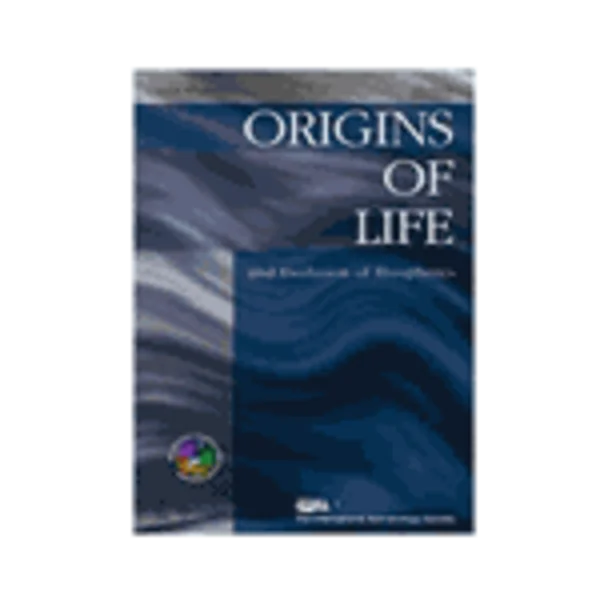-
norvaline and norleucine may have been more abundant protein components during early stages of cell evolution
جزئیات بیشتر مقاله- تاریخ ارائه: 1392/07/24
- تاریخ انتشار در تی پی بین: 1392/07/24
- تعداد بازدید: 1043
- تعداد پرسش و پاسخ ها: 0
- شماره تماس دبیرخانه رویداد: -
the absence of the hydrophobic norvaline and norleucine in the inventory of protein amino acids is readdressed. the well-documented intracellular accumulation of these two amino acids results from the low-substrate specificity of the branched-chain amino acid biosynthetic enzymes that act over a number of related α-ketoacids. the lack of absolute substrate specificity of leucyl-trna synthase leads to a mischarged norvalyl-trnaleu that evades the translational proofreading activites and produces norvaline-containing proteins, (cf. apostol et al. j biol chem 272:28980–28988, 1997). a similar situation explains the presence of minute but detectable amounts of norleucine in place of methionine. since with few exceptions both leucine and methionine are rarely found in the catalytic sites of most enzymes, their substitution by norvaline and norleucine, respectively, would have not been strongly hindered in small structurally simple catalytic polypeptides during the early stages of biological evolution. the report that down-shifts of free oxygen lead to high levels of intracellular accumulation of pyruvate and the subsequent biosynthesis of norvaline (soini et al. microb cell factories 7:30, 2008) demonstrates the biochemical and metabolic consequences of the development of a highly oxidizing environment. the results discussed here also suggest that a broader definition of biomarkers in the search for extraterrestrial life may be required.
مقالات جدیدترین رویدادها
-
استفاده از تحلیل اهمیت-عملکرد در ارائه الگوی مدیریت خلاقیت سازمانی و ارائه راهکار جهت بهبود
-
بررسی تاثیر ارزش وجوه نقد مازاد بر ساختار سرمایه شرکت های پذیرفته شده در بورس اوراق بهادار تهران
-
بررسی تأثیر سطح افشای ریسک بر قرارداد بدهی شرکت های پذیرفته شده در بورس اوراق بهادار تهران
-
بررسی تأثیر رتبه بندی اعتباری مبتنی بر مدل امتیاز بازار نوظهور بر نقد شوندگی سهام با تأکید بر خصوصی سازی شرکت ها
-
تأثیر آمیخته بازاریابی پوشاک ایرانی بر تصویر ذهنی مشتری پوشاک ایرانی (هاکوپیان)
-
طراحی یک سیستم اتوماتیک مبتنی بر تشخیص و خواندن دقیق پلاک فارسی خودروها
-
توسعه پایدار در معماری بازارهای سنتی (مطالعه موردی: بازار سنتی کرمانشاه)
-
اثر پروبیوتیک، پری بیوتیک و سین بیوتیک بر پاسخ ایمنی همورال جوجه های گوشتی
-
اثر اندازه ساچمه بر عملیات مکانیکی تدریجی سطحی در فولاد زنگ نزن آستنیتی
-
transient and steady-state nanoindentation creep of polymeric materials
مقالات جدیدترین ژورنال ها
-
مدیریت و بررسی افسردگی دانش آموزان دختر مقطع متوسطه دوم در دروان کرونا در شهرستان دزفول
-
مدیریت و بررسی خرد سیاسی در اندیشه ی فردوسی در ادب ایران
-
واکاوی و مدیریت توصیفی قلمدان(جاکلیدی)ضریح در موزه آستان قدس رضوی
-
بررسی تاثیر خلاقیت، دانش و انگیزه کارکنان بر پیشنهادات نوآورانه کارکنان ( مورد مطالعه: هتل های 3 و 4 ستاره استان کرمان)
-
بررسی تاثیر کیفیت سیستم های اطلاعاتی بر تصمیم گیری موفق در شرکتهای تولیدی استان اصفهان (مورد مطالعه: مدیران شرکتهای تولیدی استان اصفهان)
-
کاهش اثرات مخرب زیست محیطی در طراحی داخلی اماکن تجاری ایران
-
بررسی و تحلیل نقدهای فمینیستی ادبیات کودک و نوجوان در نشریه تخصصی کتاب ماه کودک و نوجوان (1376-1393)
-
طراحی رویداد در فضاهای شهری با رویکرد به مکان سازی خلاق
-
phytochemical screening and antibacterial activity of the ethanolic stem bark extract of eucalyptus camaldulensis
-
earning management, corporate governance and corporate social responsibility disclosure: evidence from indonesia




سوال خود را در مورد این مقاله مطرح نمایید :